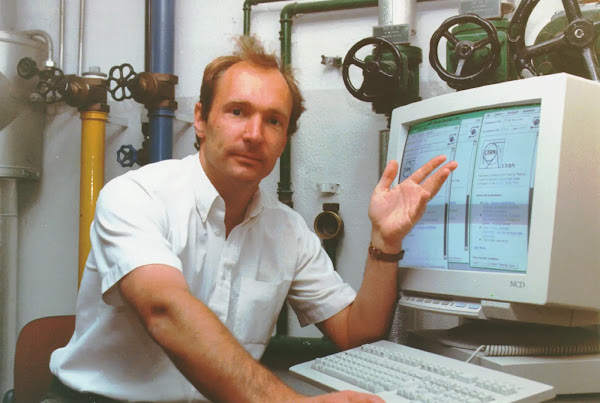Tim Berners-Lee and the Birth of the Web
Picture a world without websites. No social media, no online news, no streaming, no instant answers to your questions. It was the reality before Tim Berners-Lee changed everything. His idea started as a simple solution to a research problem and ended up becoming the biggest revolution in communication since the printing press. This is the thrilling story of how the World Wide Web was born.
The Man Behind the Web
Born in London in 1955, Tim Berners-Lee was surrounded by computing from the beginning. His parents were part of the team that worked on the first commercial computer. As a child, he played with electronics and built gadgets from scraps. Later, he studied physics at Oxford, where he built his own computer using an old television.
After graduating, he worked at various tech companies before landing a contract job at CERN—the European Organization for Nuclear Research. There, he noticed a growing problem. Scientists across the world were creating valuable data, but the information was scattered and difficult to access.
A Modest Proposal That Changed the World
In 1989, Tim drafted a document titled “Information Management: A Proposal.” It wasn’t flashy. In fact, his boss called it “vague, but exciting.” But in that paper lay the foundation for a new way to share and organize data using a network of hyperlinked documents.
What he imagined was a system where users could jump from one page to another using hyperlinks, hosted on a universal network that anyone could access. The world now knows that as the World Wide Web.
How the Web Worked
- HTML: A simple markup language to create documents.
- HTTP: A protocol to transfer data over the internet.
- URL: A way to identify and locate each web page.
Together, these components made it possible to visit a website by typing a web address and loading a page that contained text, images, and links to other pages. Berners-Lee wrote the first web browser and the first server. He didn’t just invent the web—he coded it himself.
Launch of the First Website
On August 6, 1991, the world’s first website went live. It was a simple page hosted at CERN explaining what the World Wide Web was and how to use it. There were no images, ads, or videos—just text and links. But it was the spark that ignited the digital age.
Within a few years, websites exploded in number. By the late 90s, the web was everywhere—changing the way people did business, communicated, learned, and entertained themselves. Berners-Lee had unleashed a force that would reshape modern life.
Why Tim’s Vision Was Different
Tim Berners-Lee could have patented the web and made billions. But he didn’t. He chose to give it away for free. His mission wasn’t profit. It was access. He believed the web should be an open platform that anyone, anywhere, could use without barriers.
That decision made the web grow rapidly. Developers didn’t have to pay for access. Companies could build services. Schools could launch educational platforms. Startups could rise from basements to become global giants. And people, no matter where they lived, could be connected.
The Web Today
The web now touches nearly every aspect of life. From streaming your favorite shows to buying groceries, from messaging friends across continents to searching for answers, it’s all powered by the same vision Tim had more than three decades ago.
Billions of websites now exist. Languages have evolved, platforms have risen, and the web has become a reflection of human knowledge and imagination. And it all began with a quiet proposal by a man who simply wanted scientists to share their work more easily.
Lessons from the Inventor
- Think Big, Start Small: Tim’s idea began with a problem he noticed at work. Solving that led to a global solution.
- Build to Empower: He didn’t just build the web. He built it to be free and open.
- Code Can Change the World: What started as a few lines of code became the foundation of the digital universe.
A Legacy Still Growing
Tim Berners-Lee continues to work on projects that protect internet freedom. He founded the World Wide Web Consortium (W3C) to set global standards for the web. More recently, he launched the Solid project, which aims to return data ownership to users.
He remains a strong voice for digital rights and ethical technology. His invention is complete, but his mission is not. As the web evolves, so does his commitment to keeping it fair, safe, and accessible.
The Web Was Born. The World Changed.
One man’s idea connected billions. From a desk at CERN to every phone and screen on Earth, the World Wide Web has become more than just a network. It’s a lifeline, a mirror, and a future that continues to expand.
Tim Berners-Lee didn’t just code a system. He sparked a movement. And with every page you click, search you make, or article you read—you are walking on the web he gave us all.
Written by Uzoid – Sharing the stories behind the technology that powers our world.





0 Comments